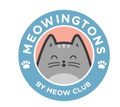The Truth About Cats and Milk
While cats drinking milk seems as natural and commonplace as mice eating cheese or dogs chewing on bones, most adult cats are in fact lactose intolerant! Also, mice don't normally eat cheese and dogs shouldn't chew bones ... but that's an altogether different conversation.
Giving a cat cow's milk as a regular treat is an almost culturally ingrained idea, likely thanks to movies like The Aristocats portraying milk as a full-on meal for cats.

But despite your kitty seeming to enjoy milk as a treat, milk (and cow's milk in particular) is actually quite unhealthy and can lead to a gastrointestinal upset in your favorite feline.
If you find your cat craves creamy treats, there are healthier alternatives. Puree treats might satisfy your kitty's craving, and they come in an assortment of flavors.
But Kittens Drink Milk!

Kittens, like all mammals, start out drinking their mother's milk until they are weaned at around 4 weeks old. Kittens will begin eating solid foods at around 8 to 10 weeks old, and gradually, they lose the ability to digest the lactose present in milk.
Most Cats Are Lactose Intolerant
After a kitten is weaned, the amount of lactase (the enzyme that breaks down lactose) that a cat's body produces declines.
Dr. Cailin Heinze, VMD, MS, DACVN, an assistant professor of nutrition at the Tufts Cummings School of Veterinary Medicine, notes: "Lactose is a sugar, and undigested sugars draw water into the intestine, causing diarrhea." These undigested sugars may also ferment in the gut, causing bloating and flatulence - and a very upset kitty.
Like humans, some cats may be able to better digest lactose than others. Their bodies may produce higher levels of lactase. Even so, most veterinarians don't recommend milk as a daily treat.
Milk, especially cow's milk, is chock full of calories and fat. “We generally recommend that cats be fed no more than 20 to 30 calories a day from unbalanced sources, such as human food items or commercial treats," says Dr. Heinze. "Skim milk contains 83 calories per cup, while whole milk contains 149 calories per cup. Too many calories from such treats can dilute out essential nutrients from a feline's main diet, contributing to the serious obesity problem that we are currently facing with our pet cats.”

Cats are obligate carnivores, and get most of their hydration in the wild from their prey (read: yummy mice). Indoor cats may have trouble keeping hydrated with a dry food only diet.
Some cats may seek out creamy, liquid treats as an added source of hydration. Puree treats might satisfy your kitty's craving, and they come in an assortment of flavors.
Ultimately, while your cat may be able to digest milk better than others, veterinarians recommend seeking a healthier, less fatty alternative.



















Leave a comment